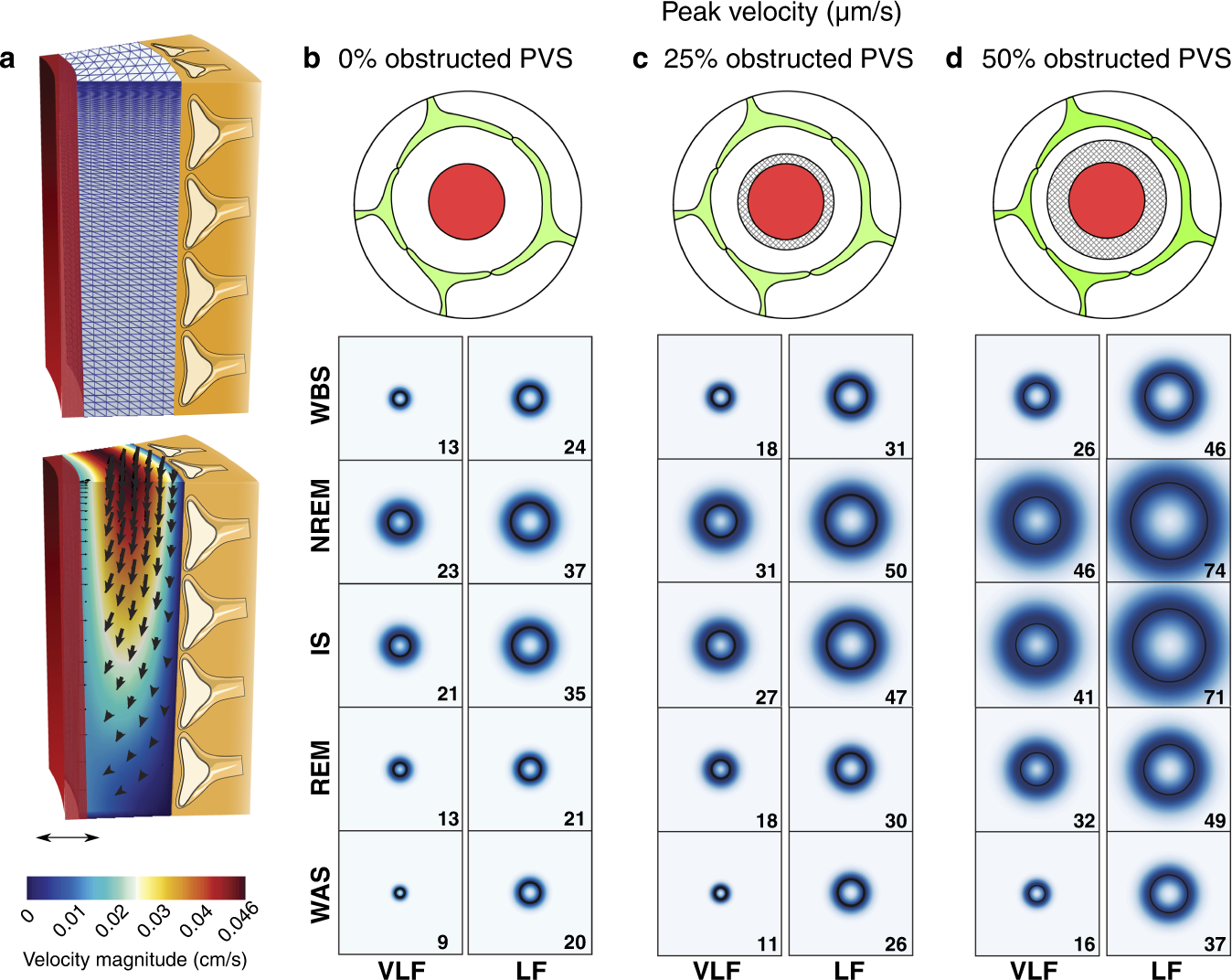Vasomotion during sleep and transport in the brain
How do specific vascular dynamics during sleep affect solute transport in the brain?
Thanks to amazing interdisciplinary team efforts, our paper is out in Nature communications !
Sleep has been shown to enhance brain clearance both in mice and humans, but the precise reason for this is unknown. The motion of vascular walls is suspected to be the main player here but so far, observations have been done mainly during non-natural sleep and at the surface of the brain only.
Thankfully, Laura has a gift for making mice sleep naturally under the microscope! The team of GliaLab recorded specific dynamics patterns for penetrating arterioles, up to 200 um under the surface of the brains of mice.
It appears that vasomotion depends on the sleep stage. In particular, large amplitude low-frequency oscillations occur during NREM sleep.
But why? Could this be useful for the clearance of the brain?
With the team of Kent Andre Mardal at the University of Oslo and Simula research laboratory, we performed numerical simulations of solute transport around an oscillating vessel.

We predict that slow oscillations of arterioles during NREM sleep enhance solute transport by 62% compared to transport by diffusion only for a 2000kDa solute. The physical phenomenon behind this is called dispersion effect. It is due to the deformation of the particle concentration profile following the deformation of the vessel which enhance mixing, even if there is no net flow !
In comparison, the slow oscillations during a quiet awake state are much less effective (transport enhancement by 30%).

